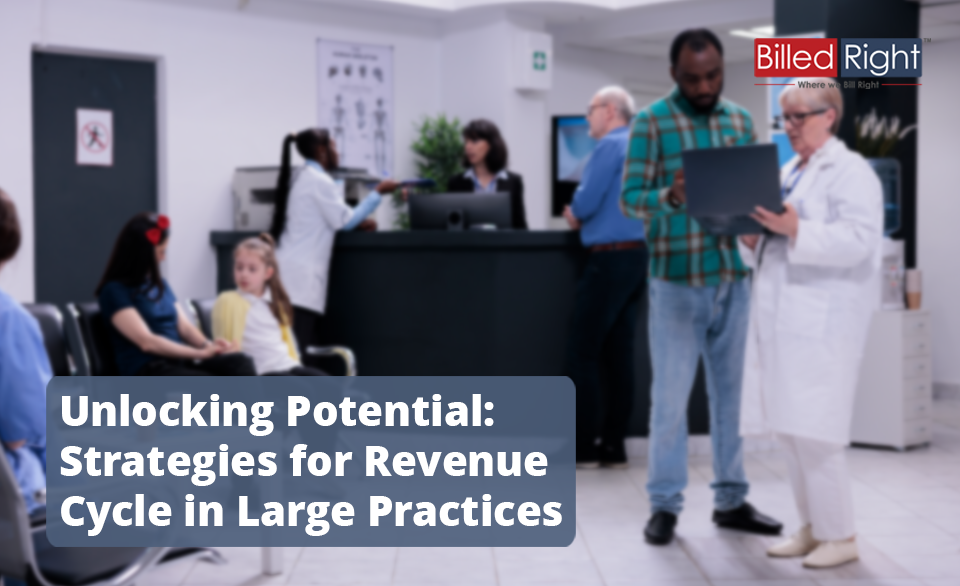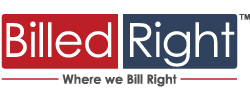Unlocking Potential: Strategies for Revenue Cycle in Large Practices

Understanding Revenue Cycle Management in Large Practices
Effective management of the financial processes in healthcare is crucial to the success of large practices. Understanding the components and challenges of the revenue cycle is essential for optimizing operations and ensuring timely payments.
Overview of Revenue Cycle Management
Revenue Cycle Management (RCM) refers to the financial management process that healthcare organizations utilize to track patient care episodes from registration and appointment scheduling to the final payment. The RCM process includes several key steps:
| Step | Description |
|---|---|
| Patient Registration | Collecting patient information and insurance details. |
| Charge Capture | Recording services provided to patients. |
| Claims Submission | Sending claims to insurance providers for payment. |
| Payment Posting | Recording payment received from patients or insurers. |
| Accounts Receivable Management | Monitoring unpaid claims and collecting outstanding balances. |
Importance of Effective Revenue Cycle in Large Practices
Large practices face unique challenges that require a robust revenue cycle management strategy. Effective RCM is vital as it directly impacts cash flow, practice sustainability, and patient satisfaction. The importance of RCM in healthcare can be summarized as follows:
| Benefit | Description |
|---|---|
| Improved Cash Flow | Timely billing and collections ensure a steady cash flow. |
| Enhanced Patient Satisfaction | Clear communication about billing improves patient experience. |
| Regulatory Compliance | Accurate coding and documentation help maintain compliance with regulations. |
| Reduced Denials | Efficient claim submission processes lead to fewer rejected claims. |
Common Challenges Faced in Revenue Cycle Management
Despite its importance, managing the revenue cycle in large practices presents several challenges. Common issues include:
| Challenge | Description |
|---|---|
| Complex Billing Systems | Navigating multiple payer contracts and varying billing requirements can be cumbersome. |
| Documentation Errors | Inaccurate coding and documentation can lead to claim denials or delays in payment. |
| High Operational Costs | Maintaining an efficient RCM process can be resource-intensive. |
| Patient Education | Many patients do not understand their billing, leading to confusion and delayed payments. |
By recognizing the potential hurdles, practices can implement strategies to enhance their revenue cycle efficiency and overall financial health.
Strategies for Optimizing Revenue Cycle in Large Practices
Optimizing the revenue cycle in large practices is essential for enhancing financial performance and ensuring efficient operations. Professionals involved in healthcare management can leverage several strategies to achieve this goal.
Implementing Technology Solutions
Advanced technology solutions play a critical role in streamlining the revenue cycle. Utilizing integrated revenue cycle management (RCM) software can automate various processes, from patient registration to claims submission and payment posting. Improved data analytics and reporting features can help practices monitor performance metrics and identify areas for improvement.
| Technology Solution | Benefits |
|---|---|
| RCM Software | Automates billing processes and reduces manual errors |
| Electronic Health Records (EHR) | Enhances documentation accuracy and accessibility |
| Telehealth Platforms | Expands service offerings and patient reach |
Staff Training and Education
Investing in staff training is essential for optimizing the revenue cycle. Continuous education ensures that healthcare professionals, including physicians, coders, and billing staff, are well-versed in the latest regulations, coding practices, and billing procedures. Regular training sessions can also improve staff morale and empower team members to identify issues proactively.
| Training Focus Area | Key Topics |
|---|---|
| Coding Accuracy | ICD-10 updates and commonly used codes |
| Billing Procedures | Claim submission and payment posting |
| Regulatory Compliance | HIPAA regulations and payer requirements |
Improving Coding and Documentation Accuracy
Accurate coding and thorough documentation are vital for effective revenue cycle management. Ensuring that all patient interactions are recorded correctly helps in accurate billing and appropriate reimbursement. Regular audits can identify coding errors and gaps in documentation, allowing practices to implement corrective measures.
| Accuracy Measure | Importance |
|---|---|
| Coding Audits | Identifies common errors and billing discrepancies |
| Documentation Reviews | Ensures compliance with payer guidelines |
Enhancing Patient Communication and Billing Processes
Effective communication with patients about billing and payment processes can significantly enhance the revenue cycle. This includes providing clear information on expected costs, payment options, and financial assistance available for patients who may need it. Implementing user-friendly billing statements and an easily accessible portal for inquiries can improve patient satisfaction.
| Communication Strategy | Benefits |
|---|---|
| Clear Billing Statements | Reduces confusion and payment delays |
| Patient Portals | Allows easy access to billing information and payment options |
By focusing on these strategies, healthcare professionals can significantly enhance the efficiency of the revenue cycle in large practices, leading to improved financial health and better patient care.





